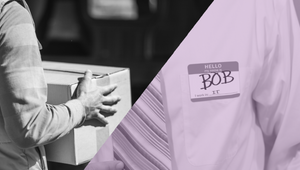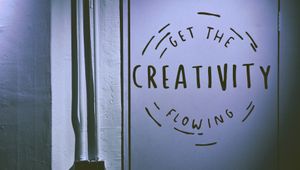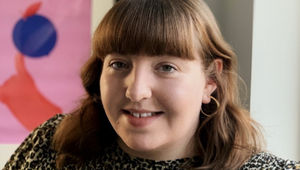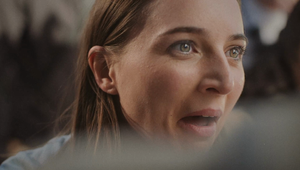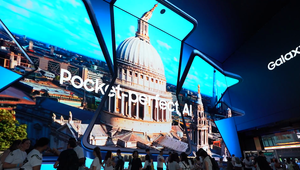
What Makes a Good Art Buyer?

Much like the agency producer, the art buyer’s role remains a mystery to a surprising number of people - even those who think they know the advertising industry. And in a world of multi-platform integrated campaigns stretching across dozens of disciplines, where does their role begin and end?
iris London’s Head of Art Buying is one person who knows the answers. With a varied collection of past job titles at various agencies - PA, art buyer, senior integrated producer - as well as experience as a freelance fashion stylist and producer, she comes to the role from a well-informed perspective.
Curiosity piqued by the misleadingly simple job description, LBB’s Alex Reeves caught up with Lu to find out what she actually does, apart from buying art.
LBB> How can agencies benefit from good art buying?
LH> In the current environment of streamlining resources, many agencies have moved away from hiring traditional art buyers. Many specialists have been replaced by multi-skilled producers taking shape as creative/integrated producers who oversee multi-disciplined projects including: project management, art buying, moving image and digital production.
One of the things I love most about iris, we embrace both the specialist and multifaceted producer. Iris believes in the power of art and photography and we have real appreciation for the craft of image making. The benefits of teaming up with a specialist art buyer enables instant ability to cut through the shit, uncovering the hidden gems in the most cost-effective and time-efficient manner. A good art buyer will have a great eye and challenge and support the creatives in pushing for the best creative solution, even if it’s a long and winding road. When faced with the impossible, an experienced specialist can work miracles by simply pulling out their little black book of magic. The right art buyer will strengthen the creative concept.
LBB> What personality traits make for a good art buyer?
LH> Strength, determination, creativity. A bit of kookiness never goes astray. Charisma to build relationships, and a good dose of diplomacy - nurturing the creatives and sometimes guiding them, all the while spinning multiple plates.
LBB>You recently judged on the Le Book awards. What did you take from that experience?
LH> I have visited Le Book over the last decade in various cities. This year in London was most enjoyable. Judging offered me a real sense of focus; engaging in one-on-ones with all award entrant exhibitors, I gained deeper insight into particular projects walking away feeling inspired. All in all, an impressive year.
LBB> How do you feel about the quality of photography in advertising vs. the work that's being done more generally?
LH> It’s difficult to compare commissioned work vs non-commissioned as the framework comes from completely different viewpoints (i.e. tight client brief vs. none). The quality of photography in advertising really depends heavily on the conviction of the team selling the work and the guts of the client. In the current landscape, it’s easy to end up in a ‘safe’ place.
What do we need to improve commissioned photography? Forward thinking, brave risk-takers and clients willing to take bold leaps to make iconic work. Our way of life at iris is ‘For the forward’. Playing it safe is how you end up with watered-down photography. When you see a client take a risk (either on a photographer or concept) it resonates so much more in the market ending up with award-winning work. A great example of this is our summer running campaign for adidas UBX.
We should all have the confidence to push, to advise and educate our clients with the knowledge we possess. We are the experts. If we share more, the trust from clients will become second-nature enabling us to create epic imagery.
LBB> In an age where print and poster campaigns are a smaller portion of advertising in general, how has the role of art buyer developed? What different skills does today's landscape require?
LH> In the world of digital media, we see less and less importance placed on photography and art, with dominance focused on moving image. I’m perplexed by this as advertising and marketing is all about image-making, be it still or moving. More than ever I believe the role of a specialist image-maker (art buyer) is key in creating iconic imagery in the ever-saturated landscape, particularly whilst up against Instagram and the self-proclaimed photographer.
Traditionally, an art buyer searched for talent, negotiated fees then handed over to a project manager for production. At iris, we approach art and photography production from a 360-degree perspective - our art buyers are involved in supporting creative teams during creative development, artist research and scoping through to pre-production and shoot production. Today an art buyer needs a solid grounding in production to see the project production through the line.
LBB> Do your previous roles in integrated production and fashion styling feed into that?
LH> 100%. I entered adland as a creative PA having the privilege to support some of the best creative minds in the biz. That period of my career ignited my love of image making. My career in styling has given me insight into both sides of the coin, I have a greater understanding of the pain and dedication photographers and crew endure in order to deliver to brief. My experience as a stylist enables me to work completely collaboratively with our commissioned teams, understanding pressure that might be overlooked by others. It also helps with the briefing process - some creatives hate writing wardrobe briefs; I can write those in my sleep.
My integrated production experience gained at Brothers and Sisters is another useful string to my bow, having an understanding of producing small-scale moving image and digital assets creates a more integrated approach with our wider production team here at iris.
LBB> What phrase do you find yourself repeatedly saying in your job, whether talking to photographers, illustrators or people in the agency?
LH> ‘What’s the budget?’
LBB> Knowing what talent is available is clearly a huge part of your job. How do you stay up to date when there's so much out there?
LH> Every day we have a time protected to review folios and meet with agents and artists. I’m fortunate to have an incredible team who keep their ears to the ground, and we usually have monthly sessions to go through emerging artists. My inbox gets flooded but I do my best to respond to as many as possible.
LBB> What's your favourite shortcut to inspiration?
LH> Tough one. In all honesty, it depends on my mood. We have a subscription to Luerzer’s Archive. I love It’s Nice That. I love Designspiration for an instant pick me up. And another is booooooom.
I’m incredibly tactile – I love turning the page of a magazine, and opening a leather-bound folio. If something gets sent to me that I can feel and flick through, that cuts through so much more than an email. If I’m looking to commission work, I want to see and feel a folio. If it’s an inspiring image on postcard presented on a nice bit of stock that really resonates with me. Inspiration can come in the simplest form, I like it in the post with a stamp.









